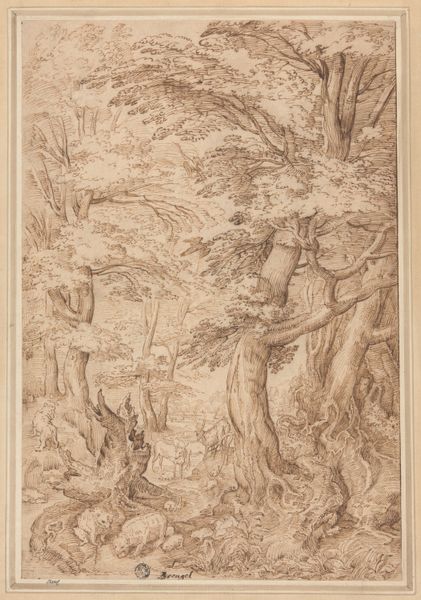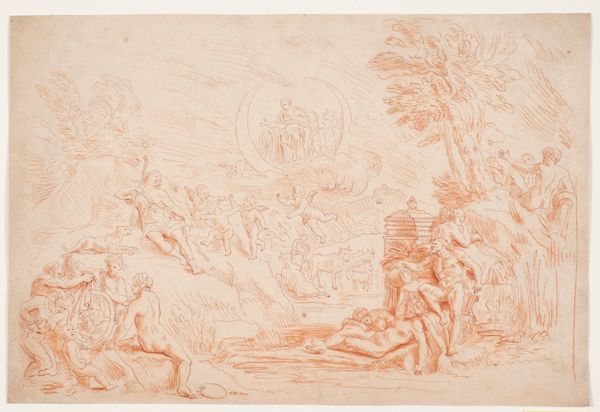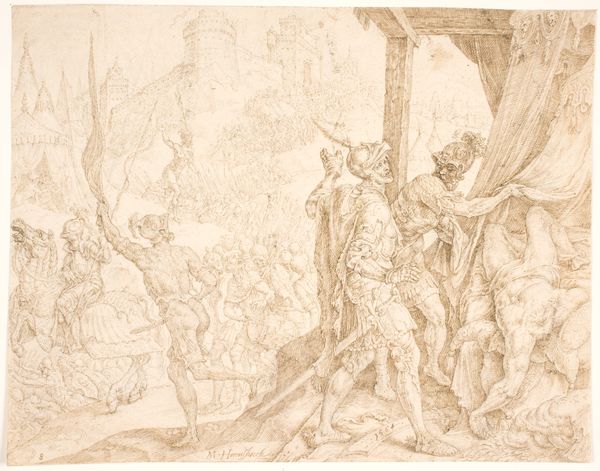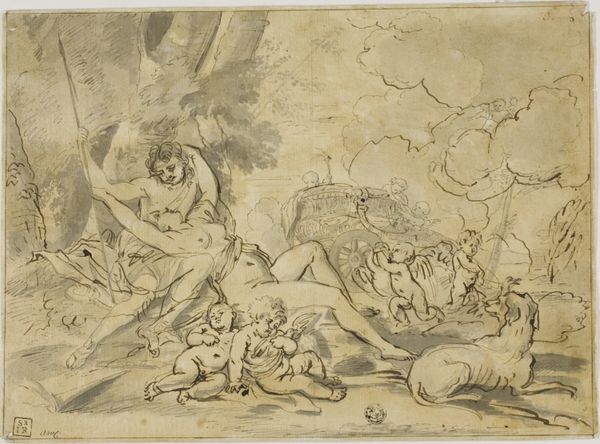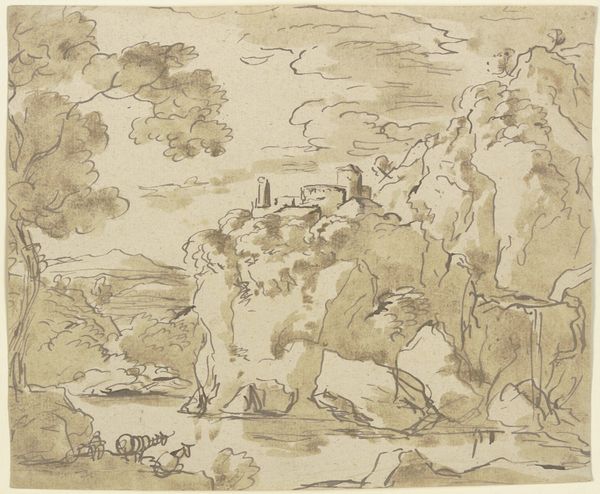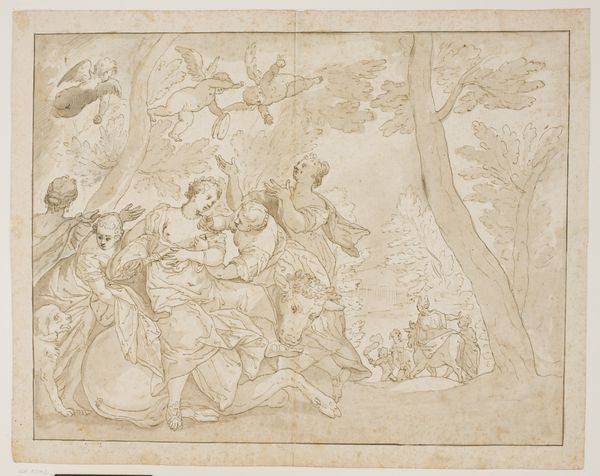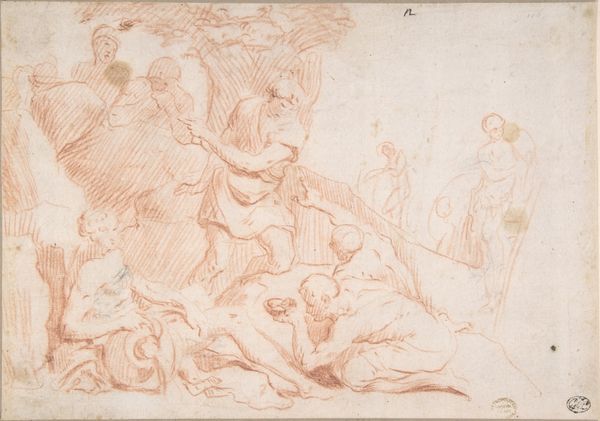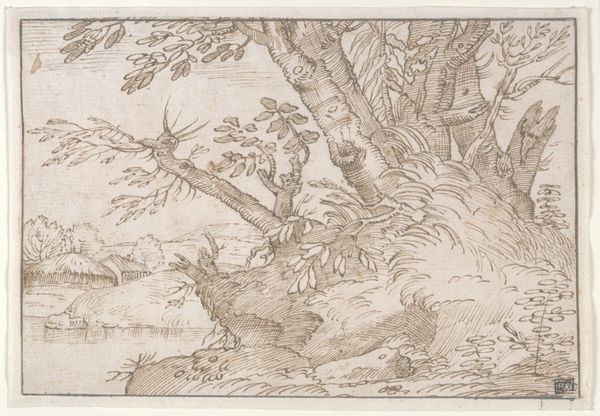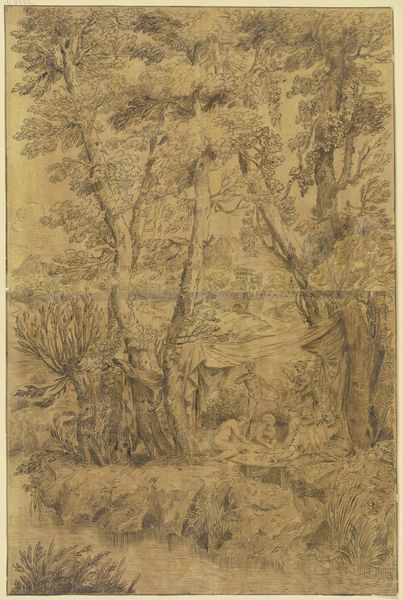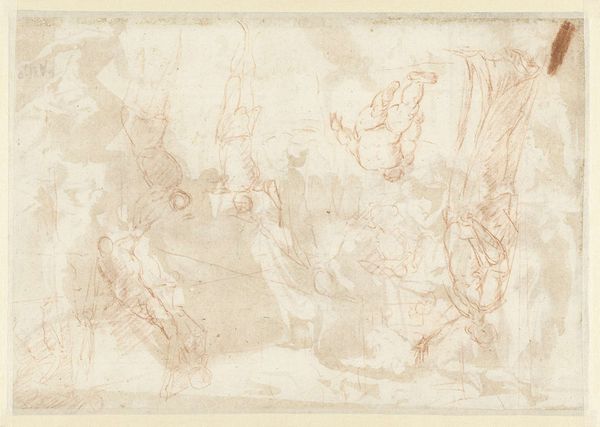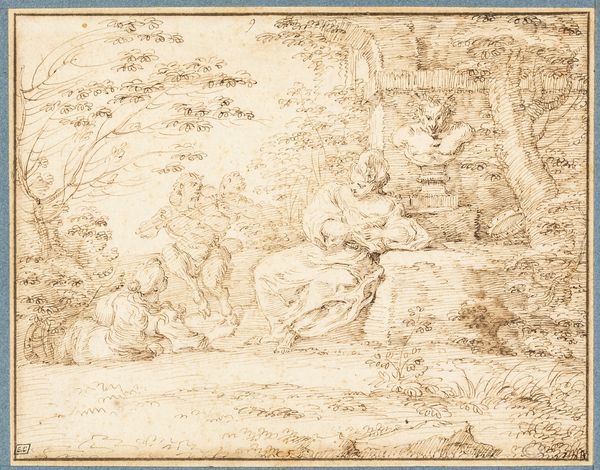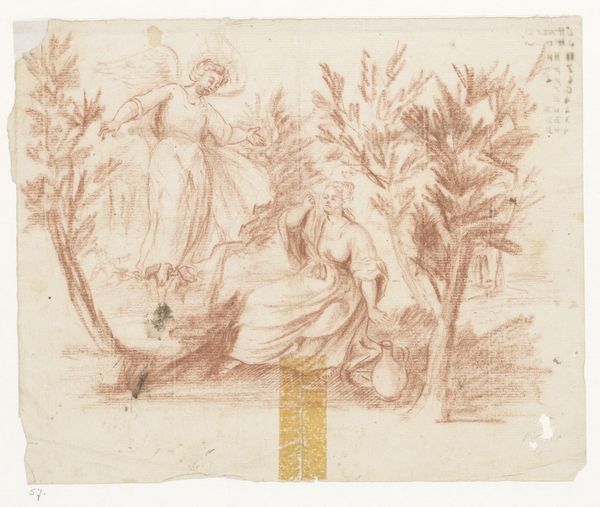
drawing, paper, ink
#
drawing
#
allegory
#
narrative-art
#
figuration
#
paper
#
11_renaissance
#
ink
#
academic-art
#
italian-renaissance
Dimensions: 365 mm (height) x 551 mm (width) (bladmaal)
Curator: Here we have a 16th-century drawing titled "Jupiter suckled by the she-goat Amalthea," housed at the SMK, Statens Museum for Kunst. It's attributed to an anonymous artist. Editor: My first impression is one of gentleness, even fragility. The ink seems almost watercolor-like, creating a soft, dreamy atmosphere. It depicts this pastoral scene with this monumental backdrop. Curator: Indeed, the composition leads the eye through a network of human and animal forms clustered around the central act of nurturing. The material – ink on paper – contributes to the artwork's accessibility. These drawings allowed for circulation of imagery and ideas to wider audiences beyond the elite. Editor: And consider how the myth itself functions politically. Jupiter's divine right to rule is quite literally manufactured, depending on the milk provided by this goat. This seemingly innocuous scene legitimizes a patriarchal power structure. The idyllic setting serves to mask very real power dynamics. How was such imagery displayed, circulated, and consumed at the time? Curator: The act of drawing, the very labor invested, further democratizes it compared to, say, frescoes for a palace. This image could have been part of an artist's training or even been sold. I am interested in the availability of ink and paper at this time. Were these accessible materials for more than elite artists, enabling broader participation in image creation? Editor: That’s a wonderful point. The reproduction of classical imagery serves specific purposes for elite class. The content reinforces political agendas while being circulated for an audience for a different level. These reproductions played a significant role in shaping public perception of power, divinity, and societal norms. Curator: By using easily accessed paper and ink, image makers create allegories about the most foundational aspects of a social order. It becomes this readily available tool, that gives birth to imagery and ideas about leadership that everyone consumes. Editor: So we see both fragility and potency coexisting. The artwork gives a glimpse of its making in this image of care and power – an everyday political act we could say, feeding of its leaders! Curator: Yes, and examining the intersection of labor, imagery, and material availability enriches our experience. Thank you. Editor: Agreed, it’s vital to consider the broader cultural landscape influencing even a seemingly simple drawing like this.
Comments
No comments
Be the first to comment and join the conversation on the ultimate creative platform.
